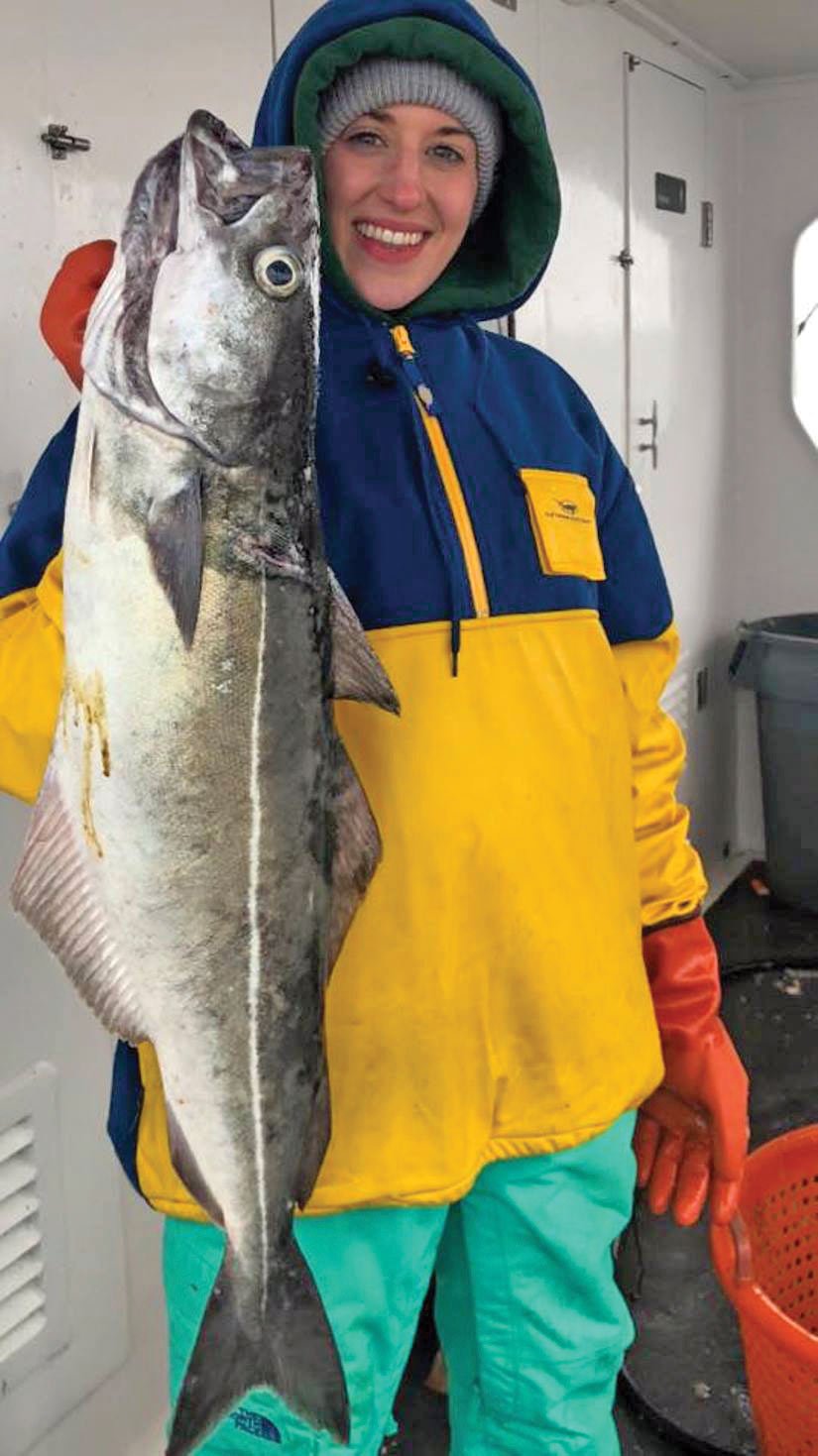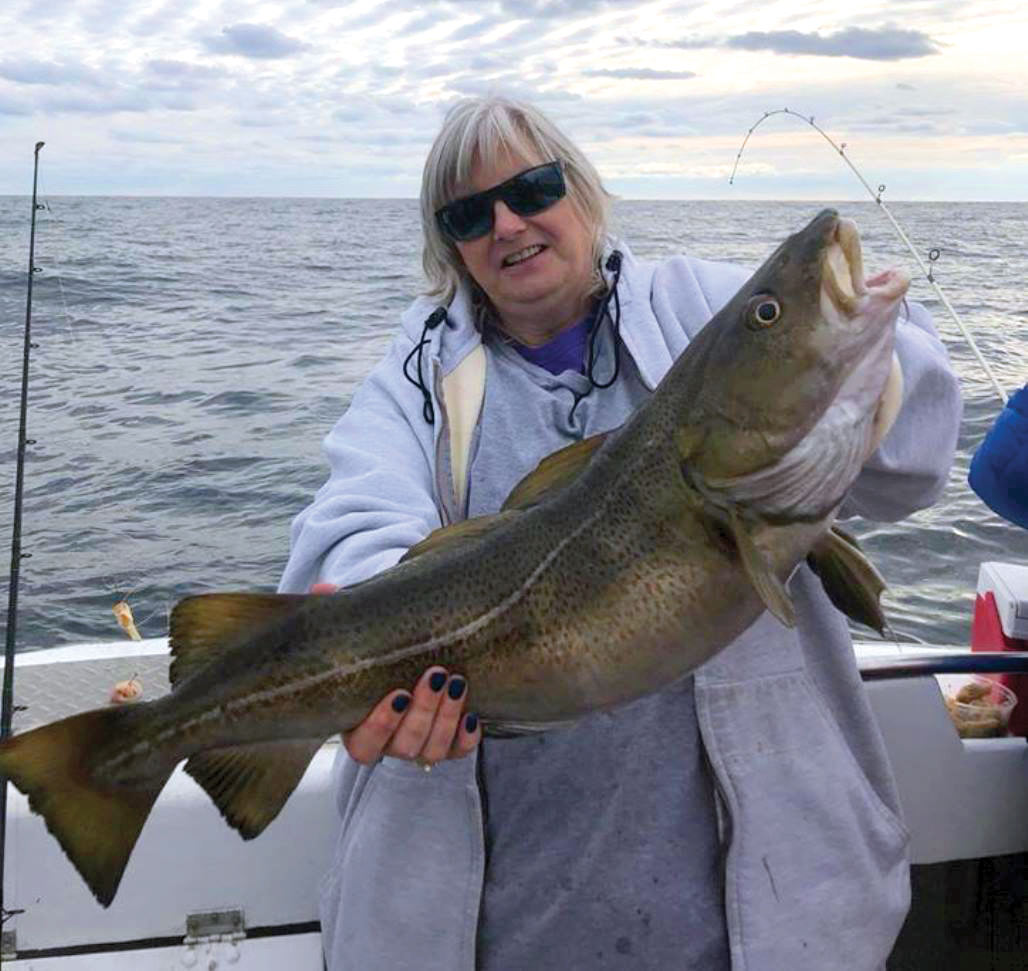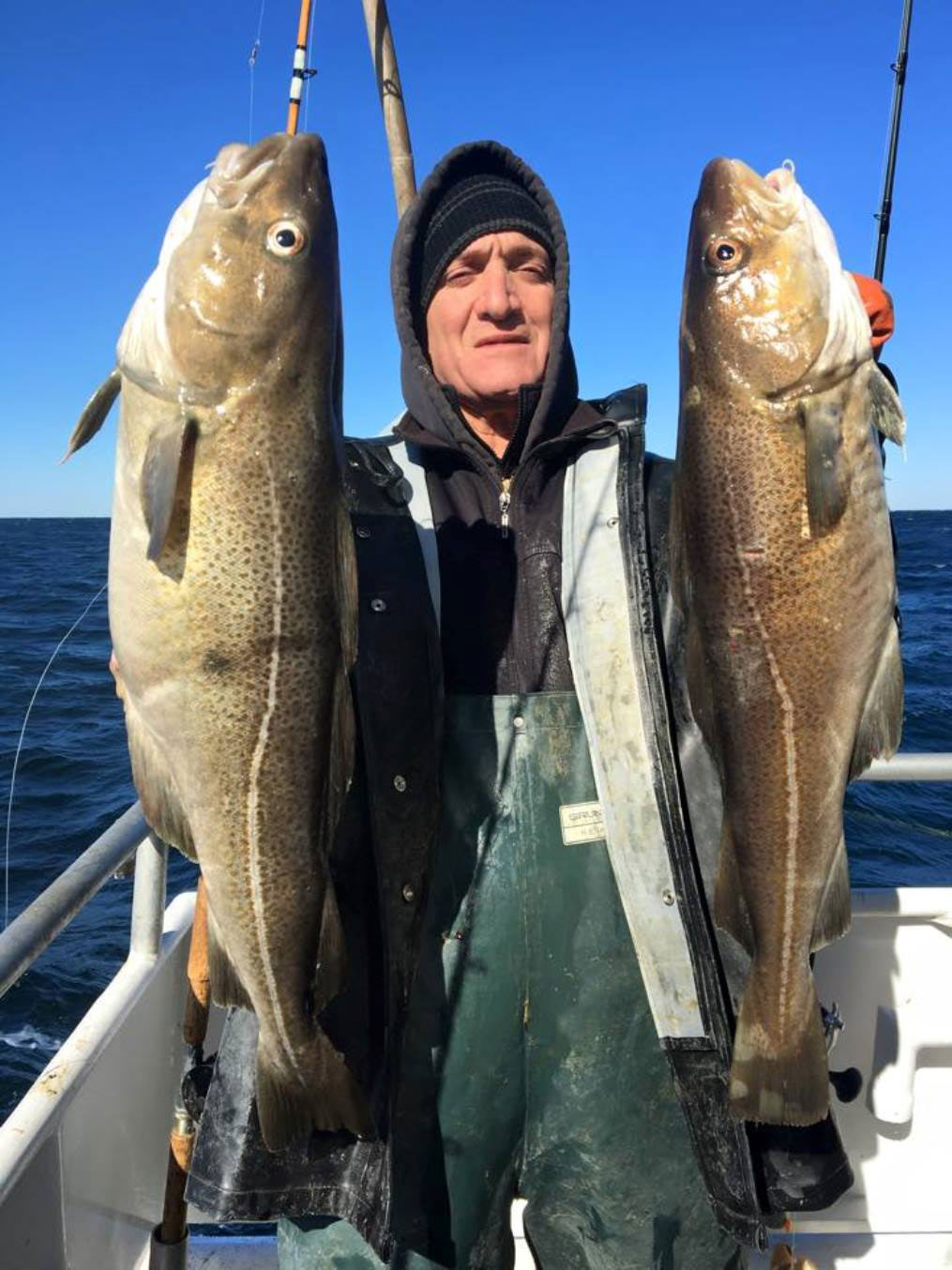
A veteran sinker bouncer shares tips to make your next cod trip a success.
Each winter, many dye in the wool Long Island and Metro New York anglers suit up and head for their favorite open or charter boat hoping to wrestle with some Atlantic green cod on the offshore grounds. And while many seasoned anglers know a thing or two about putting together a catch of the winter kings, there is always room for a few suggestions that can prove helpful on those days when the fish play hard to catch, to boost one’s chances at a hefty pool cod, or to simply graduate from codfishing 101. Whatever the case, a few tricks in the back pocket can go far on those long,often cold days on the fishing grounds.
Stay Warm at the Rail
First off, staying warm is critical to maintaining concentration when fishing in cold or inclement weather. If you dress properly, you’ll feel the telltale tug of a cod on your line rather than feeling the cold on your body. Your base layer is your first level of clothing that serves two purposes; the first is to insulate your body’s natural heat and keep it from escaping; the second is to wick moisture away from your skin to the outside of the fabric so it can evaporate. The moisture wicking process is very important because if you begin to sweat and it dries on your skin or saturates your clothing, your ability to stay warm will be severely hindered. Thick thermal underwear and a good pair of insulated socks make for a good base layer. Speaking of socks, since your feet do not move much while fishing, it is very easy for them to get cold. As with the base layer, the moisture wicking capability of your socks is essential to staying warm. A good option is to have a thin liner sock that wicks moisture away and then a thicker sock to insulate your feet. The mid layer is meant to keep your natural body warmth in, while keeping the cold out. For me, the mid layer is usually a hooded sweatshirt and jeans. I prefer polyester sweatshirts rather than cotton because polyester has much better water resistance than cotton. Lastly the outer layer’s main purpose is to keep the wind and cold out, which comes in the way of waterproof PVC raingear. Outer Layer water resistant breathable tops and everything you need to keep your head, hands and feet warm and toasty can be found online and can be delivered by the time cod season is in full swing.
Time to Fish
Starting with tackle, fast tapered graphite rods in the 6- to 8-foot range equipped with conventional reels filled with 30- or 40-pound braided line are well suited for tackling cod. Braided line is essential due to its sensitivity and strength. However, cod can be quite line shy at times, and since most braids are visible despite their thin diameter, a 30- or 40-pound fluorocarbon leader approximately 8 feet in length and tied to the main line of braid via an Albright Knot should eliminate any shyness a cod may be feeling. Rigs vary depending on the depth of water and the type of bottom. However hi/lo rigs with 5/0 to 7/0 octopus hooks are simple and get the job done. If you would like to get fancy, pink, red and blue skirts with silver specks seem to have an edge. Twister tails, jelly worms and plastic shrimp tails also entice cod, especially when the boat is drifting slowly. Therefore it certainly wouldn’t hurt to bring along an assorted supply of red, white and chartreuse, which can be extremely effective when added to a clam baited hook.

Dress to Impress
Contrary to popular belief, it is imperative to bait your hook properly when targeting cod. Fishermen that apply two or even three whole clams on a hook at one time are wasting bait and causing the cod to be weary since the blob of bait causes their rig to spin and tangle. Instead, take a fresh or lightly salted whole clam (Stay away from the heavy salted clams.) and cut it in half, leaving the belly on both pieces. Thread half the clam up the hook and onto the leader with the belly facing down, then take the other half of the clam and impale it on the hook just once with the belly dangling from the hook. This presentation is effective both drifting or when anchored. If you prefer to take a pass on the clam bait, a6-inch Gulp Alive swimming mullet in either pink or nuclear chicken works magic at times. Simply thread the Gulp onto the hook, keeping the curly tail dangling. It may be a good idea to bring along some glow, pearl white and new penny Gulp as standbys. On the positive side, you won’t have to contend with dogfish nearly as much as with a clam baited hook, and you don’t have to keep taking your gloves off to re-bait on those extra cold days, especially if the cod find the Gulp appealing.
Chrome and Butterflies
Many anglers assume that cod are strictly bottom dwellers, and nothing could be further from the truth. In fact, cod chase their quarry better than halfway up the water column to appease their appetites. When the captain’s fishfinder paints a picture of cod chasing a school of baitfish, breakout the chrome or gold plated jigs with a hammer finish between 6 and 12 ounces, and add a jelly worm teaser on a dropper loop about 2 feet above the diamond jig. Savvy anglers employing this tactic often add a green or blue skirt with silver specks to the hook attached to the diamond jig. Anglers who add the skirts to the jig have been experiencing a big difference in the catch, both in better quality and quantity. Don’t forget some smooth finish diamond jigs since there are many days when the cod switch off to smooth jigs for an hour and then decide they want a hammer finish jig. Should you decide to jig, it is paramount to understand that diamond jigging over deep water wrecks requires experience and skill. Shimano’s Butterfly Flat Side Jigs have become a useful tool on the cod grounds. Both the 280 and 325 grams (10 to 11-1/2 ounces) in green/silver and blue sardine are best applied directly to the leader, jigging the bugs right off the bottom. While the jigs have their virtues, an inexperienced fisherman unfamiliar with fishing rough, rocky bottom can lose more than his or her share of the bugs and at $18 a pop, things can get expensive rather quickly.
Braid is much preferred over mono when jigging, both for its sensitivity as well as to minimize the weight you need to hold bottom. You want to keep your line as close to straight up and down as possible to avoid, or at least minimize, the snags on the bottom. The closer your line is to 90 degrees to the water, the less likely your hooks are to find something to hold onto the bottom.

Tricks of the Trade
Keeping a few tricks in your back pocket can go a long way, especially when the bite is slow. For one thing, strong currents and deep water can spell tangles, which can be frustrating, especially when a boat is railed with grouchy anglers. The solution is extending the hook away from the leader by about 6inches by using stiff 60-pound nylon to the hooks. In addition, separating the main line of braid via a barrel swivel to the leader helps keep the rig from spinning. Once things are good to go, cast as far as you can away from the boat, lock the reel and get ready. While most open boats don’t bother with chumming, some charter boats chum on the drift by smashing and doling whole skimmer clam, shell and all. Once the chum is set up in the zone, the captain repeats the drifts. Chummingcan result in an aggressive and steady bite as the cod get drawn to the freebies. Anglers who choose to fish a basic double hook cod rig using 5/0 to 7/0 octopus hooks, may want to add a Mann’s 9-inch jelly worm right to the hook to mingle with the clam bait. Strawberry, grape, white and motor oil green are all hot colors and are a must if you want a limit of cod and a shot at the pool. The rigs with the jelly worms usually out fish a basic rig at a startling five to one. Lastly, while most anglers lock up their reels once the rig hits bottom, it is imperative to have the reel in free spool while drifting, using your thumb to keep pressure on the spool. This technique allows the angler to feed out line as they drift over drops or lose touch of the bottom when the drift is faster than 1-1/2 knots.
The next time you set foot on one of the open or charter boats fishing for cod this winter, give some of these tips a try. Hopefully they will help put some cod fillets on the dinner table, and just maybe, make you a pool winner.
| OPEN AND CHARTER BOATS SAILING FOR WINTER COD |
|---|
|
Before making plans to sail with any of the boats below, be sure to confirm sailing schedule and time with the captain. Sailing schedules can vary widely during the winter months and are subject to change depending on the weather and fishing. Capt. Dave, Sheepshead Bay, 347-699-3651 |




